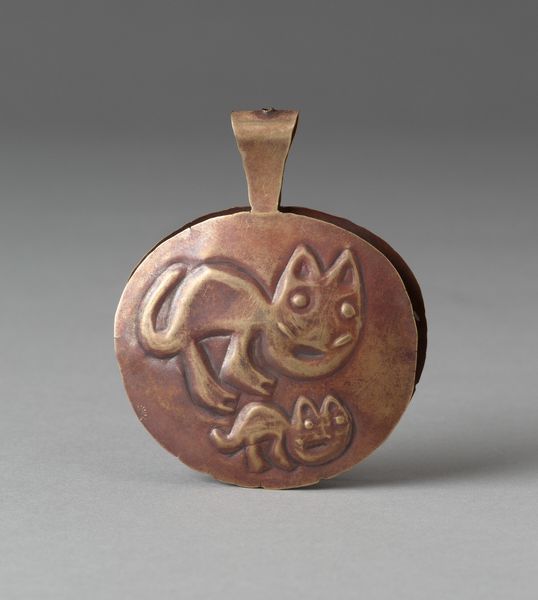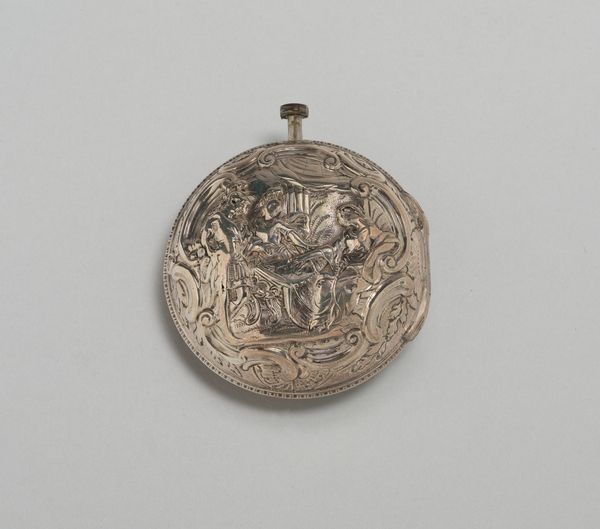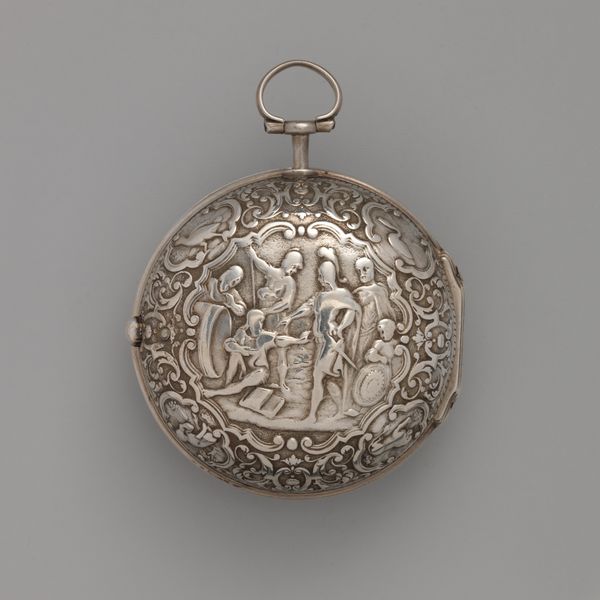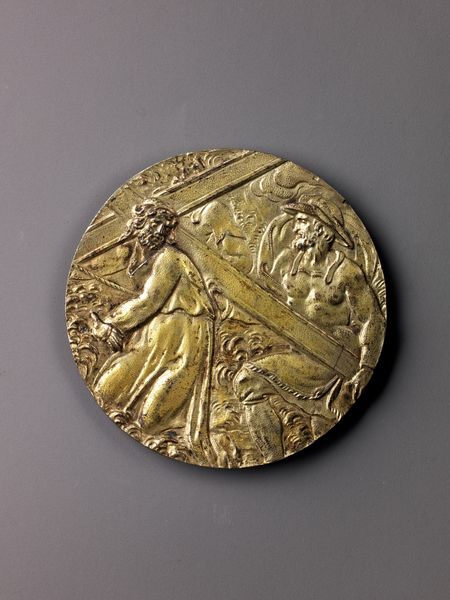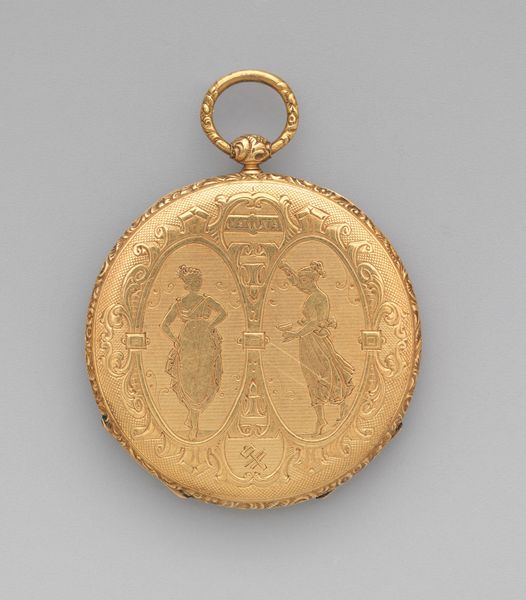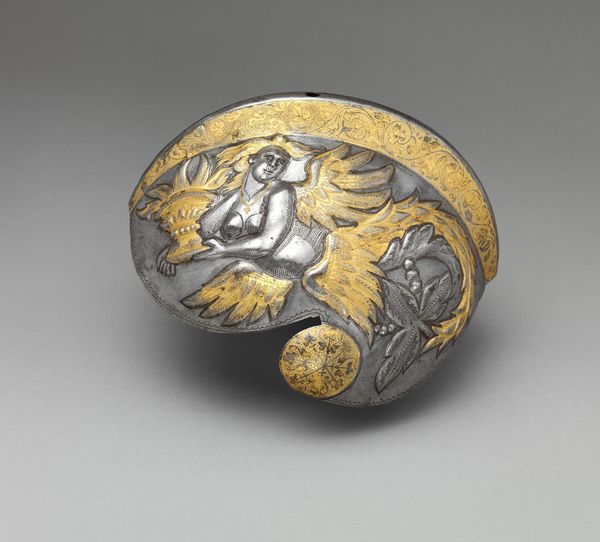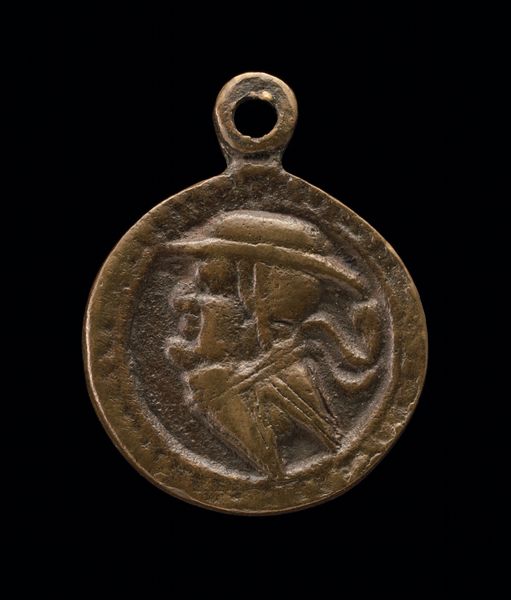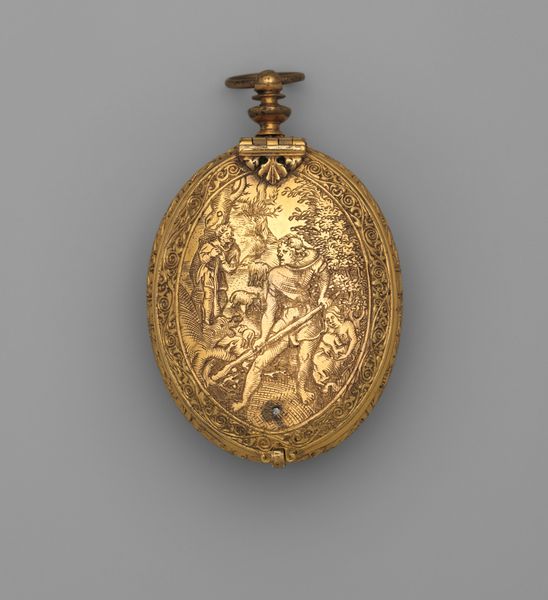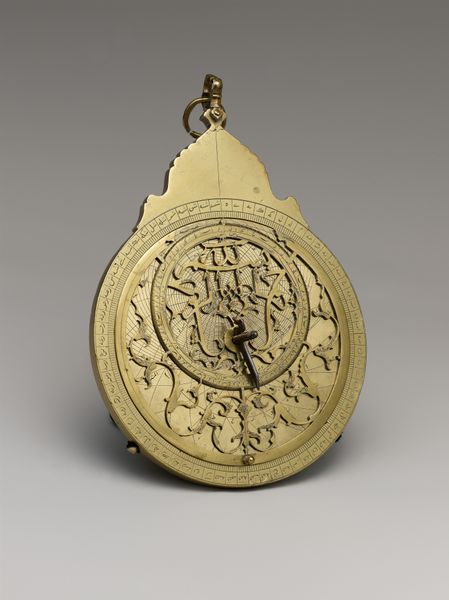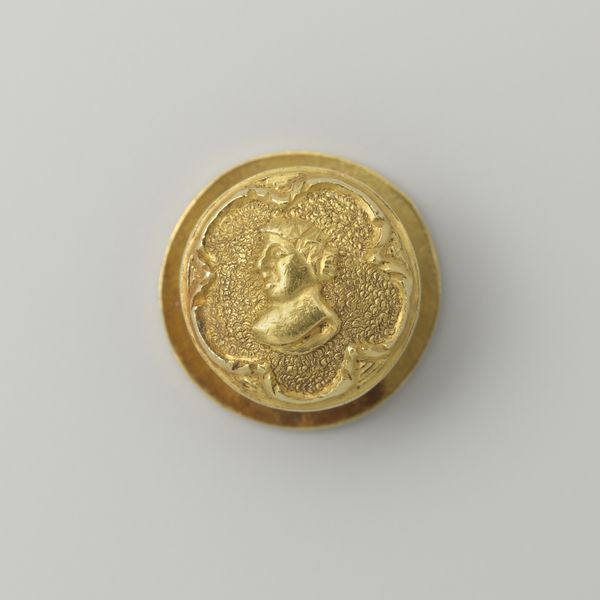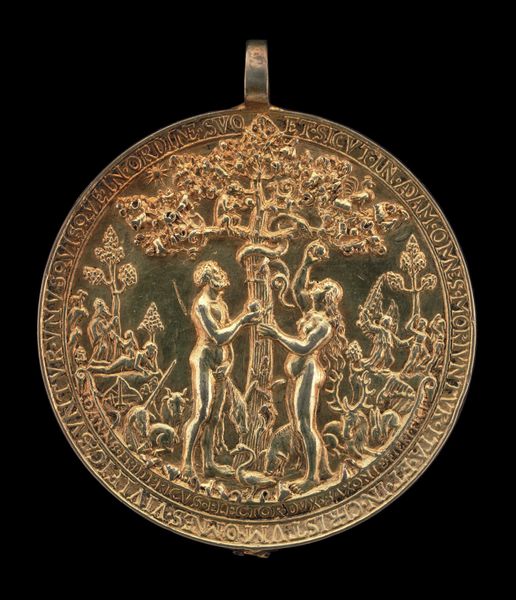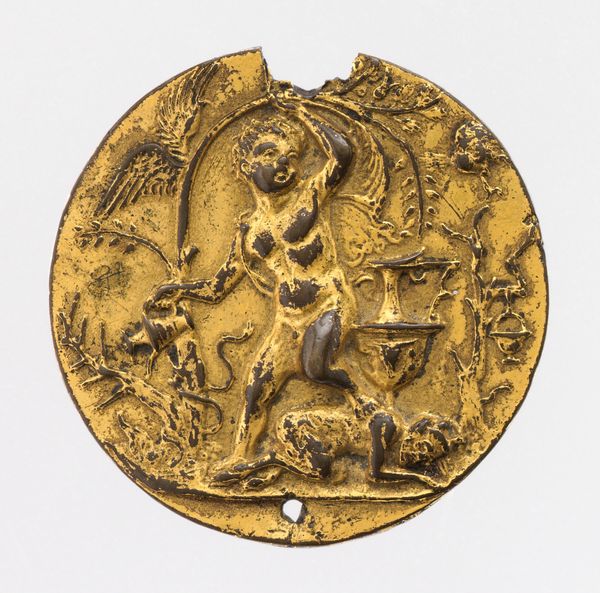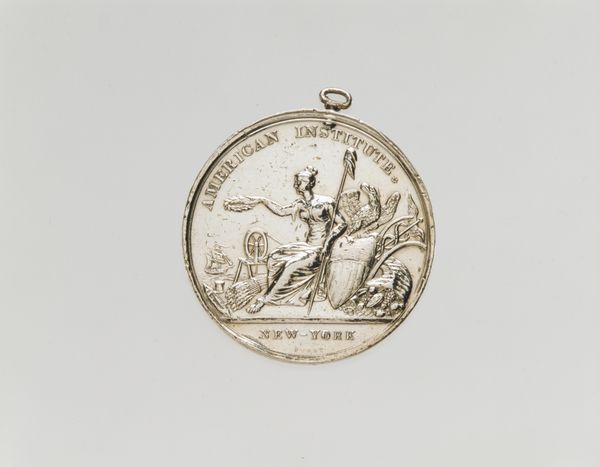
Circular Tweezers with Bird in Relief Against a Stippled Background c. 1000 - 1400
0:00
0:00
metal, gold, relief
#
metal
#
gold
#
relief
#
indigenous-americas
Dimensions: 6 × 4.3 cm (2 3/8 × 1 11/16 in.)
Copyright: Public Domain
Editor: This delicate golden object, titled "Circular Tweezers with Bird in Relief Against a Stippled Background," dates back to approximately 1000-1400 and was created by the Chimú culture. I'm struck by the detail they managed to achieve with such a small piece. What's your perspective on it? Curator: From a materialist perspective, the very existence of this piece raises intriguing questions. How was the gold sourced? What was the nature of the labor involved in its extraction and refinement? Considering its function, tweezers, we see an intersection of practical necessity and symbolic representation. The bird motif, carefully rendered in relief, transforms a utilitarian object into a bearer of cultural meaning. How might the production of this item have impacted the Chimú social structure and trade networks? Editor: That's fascinating! I hadn’t really considered the social context of gold production itself. Was gold readily available or a rare commodity? Curator: Gold was certainly valued, not necessarily for inherent monetary value as we understand it today, but for its malleability and its ability to reflect light, embodying power, the sun, divinity. Think about the technology of the time. Smelting, casting, the very ability to manipulate metal indicates specific forms of specialized labor. Also, consider the "stippled background." Each tiny indentation painstakingly hammered or punched. What does that repetitive action communicate about the value assigned to this object? Editor: So, the artistry isn't just in the bird design, but also in the immense labor invested. Curator: Precisely. It prompts us to think critically about the division of labor within Chimú society, access to resources, and the ways in which even the most functional objects can become powerful cultural artifacts. It transcends simple adornment to represent larger systems of production, power and value. Editor: This really broadens my perspective; I was initially just admiring its aesthetic. Now, I’m pondering the hands that crafted it and the social system that made its creation possible. Curator: Exactly. It shows that examining materiality opens avenues to understanding ancient cultures that visual analysis alone can't offer.
Comments
No comments
Be the first to comment and join the conversation on the ultimate creative platform.
